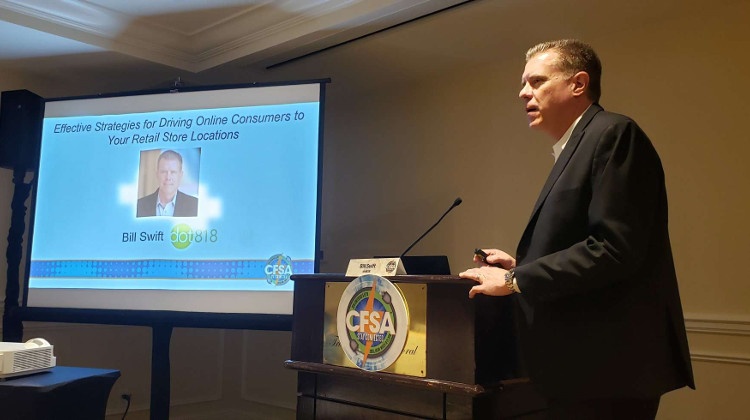Posted 2019-03-22
Effective Strategies for Driving Online Consumers to Retail Store Locations

Here is a short summary of what we shared during our CFSA 2019 session.
Thank you to everyone who attended our CFSA 2019 session on effective strategies for bringing online consumers to brick-and-mortar companies. In case you missed it, here were the major takeaways:
- Inefficiencies in online lending can be an opportunity for local lenders.
- Retail stores can leverage the online channel to acquire new customers by creating effective partnerships with online lenders, thereby obtaining turn-down and out of footprint traffic.
- Retail stores can also acquire new customers using third-party, lead-gen companies and by turning their store(s) into a high-performance call center.
- It is important to avoid compliance pitfalls.
Partnering with Online Lenders
Over 70 percent of non-prime and underbanked consumers who apply for an online loan do not end up receiving one from an online lender. Sometimes this happens when the online lender underwriting is very tight, consumers request more money than they can qualify for, consumers miskey important information on the form (SSN, bank info, etc.), and consumers are paid with a paper check and do not have direct deposit (21 percent of companies still pay their employees via physical check).
It is possible for retail stores to serve this segment, as brick-and-mortar companies can offer:
- a more subjective approval process,
- the ability to counteroffer with a lower loan amount,
- access to multiple products and services,
- face-to-face interaction with the consumer to better understand their situation,
- and the ability to service customers who are paid with a physical check.
This segment brings a new demographic of customers to retail stores. It is also beneficial to online lenders, who spend millions of dollars a month on online advertising only to see many of these customers fall outside of their lending footprint or do not qualify for their product. By partnering with brick-and-mortar companies, online lenders can increase their return on marketing spend.
Pros for the retail stores include having a direct relationship with the lender, knowledge that the leads are exclusive, and a lower per-lead cost. Cons are having to manage multiple partnerships and integrations and knowing that some of the traffic may not be close to any of their store locations.
Third Party Lead-Gen
Lead-gen companies also spend a considerable amount on online advertising, while also working with online lenders to monetize their turndown traffic. Many of the customers they spend money on to drive to their websites will not be approved by lenders in their network. Retail stores can partner with these lead-gen companies to buy their unconnected traffic.
Pros for the retail stores include access to lead volume targeted specifically to the store’s footprint, only one relationship and integration to manage, and, in some cases, the technology to help the store effectively manage and convert leads (if provided by the lead-gen). Cons are potential competition with other lender clients, not enjoying the exclusivity of the leads, and sometimes not having transparency.
Becoming a Call Center
Most retail stores have a fair amount of downtime and are already making outbound calls. These companies can turn their store network into a high-performing call center. It is important for these call centers to undergo best practice training and learn how to handle questions specific to the online customer.
Avoiding Compliance Pitfalls
There is a fine line between doing a thorough job of onboarding a potential vendor and potentially becoming vicariously liable for their actions. “Vicarious liability” means that if a lender exercises too much control over the actions of a vendor, a court may find that the lender is liable for the vendor’s actions, as the vendor was acting as the lender’s agent (and not its independent contractor, despite what the contract may regard the parties’ status to be).
Other important compliance considerations include:
- Know the companies you are working with. Do your due diligence during the onboard investigation. Look at their reputation in the industry and check if they play by the rules. Ask for references. Find out where a lead generator gets its leads from. Is it all internal traffic, or do they have sub-affiliates? How do they vet and monitor their sub-affiliates?
- Look into their practices, policies, and procedures. Do they have an info security policy? How do they handle, collect, store, and transfer data? Do they have fraud detection? How do they onboard their vendors?
- Require creatives, review, and propose changes. Get their referring URLs and review them. An exhaustive list of URLs is ideal. Look at examples of their marketing creatives (e.g., email templates). While reviewing, check for potential misrepresentations or UDAAP violations.
- Stress transparency as you get to know your lead generators. Have a good relationship with their compliance team.
Thank you to everyone who made CFSA another great conference. It was our pleasure to be a Gold Sponsor this year and to have had the opportunity to host a session. Please let us know if you have any questions about getting started with sending online traffic to retail store locations.
